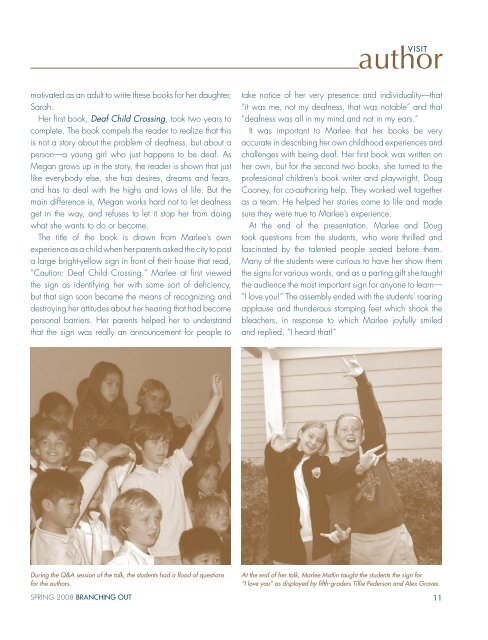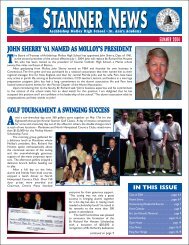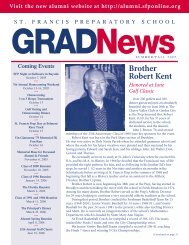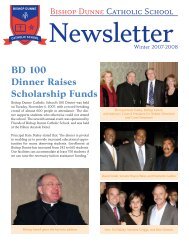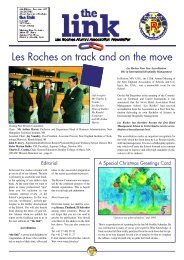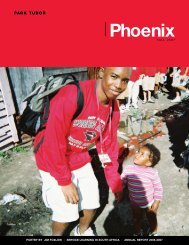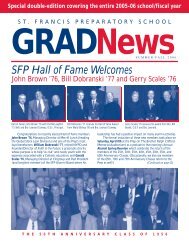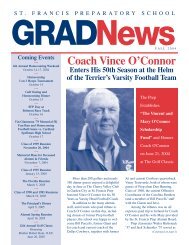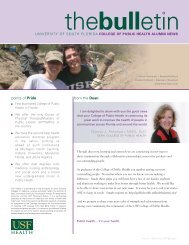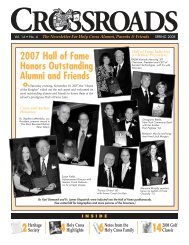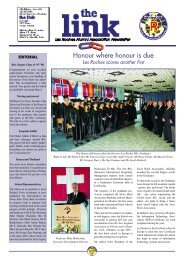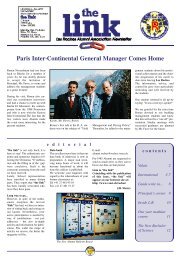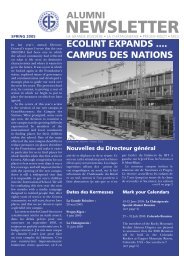Clairbourn School
Clairbourn School
Clairbourn School
- No tags were found...
You also want an ePaper? Increase the reach of your titles
YUMPU automatically turns print PDFs into web optimized ePapers that Google loves.
authorVISITmotivated as an adult to write these books for her daughter,Sarah.Her fi rst book, Deaf Child Crossing, took two years tocomplete. The book compels the reader to realize that thisis not a story about the problem of deafness, but about aperson—a young girl who just happens to be deaf. AsMegan grows up in the story, the reader is shown that justlike everybody else, she has desires, dreams and fears,and has to deal with the highs and lows of life. But themain difference is, Megan works hard not to let deafnessget in the way, and refuses to let it stop her from doingwhat she wants to do or become.The title of the book is drawn from Marlee’s ownexperience as a child when her parents asked the city to posta large bright-yellow sign in front of their house that read,“Caution: Deaf Child Crossing.” Marlee at fi rst viewedthe sign as identifying her with some sort of defi ciency,but that sign soon became the means of recognizing anddestroying her attitudes about her hearing that had becomepersonal barriers. Her parents helped her to understandthat the sign was really an announcement for people totake notice of her very presence and individuality—that“it was me, not my deafness, that was notable” and that“deafness was all in my mind and not in my ears.”It was important to Marlee that her books be veryaccurate in describing her own childhood experiences andchallenges with being deaf. Her fi rst book was written onher own, but for the second two books, she turned to theprofessional children’s book writer and playwright, DougCooney, for co-authoring help. They worked well togetheras a team. He helped her stories come to life and madesure they were true to Marlee’s experience.At the end of the presentation, Marlee and Dougtook questions from the students, who were thrilled andfascinated by the talented people seated before them.Many of the students were curious to have her show themthe signs for various words, and as a parting gift she taughtthe audience the most important sign for anyone to learn—“I love you!” The assembly ended with the students’ roaringapplause and thunderous stomping feet which shook thebleachers, in response to which Marlee joyfully smiledand replied, “I heard that!”During the Q&A session of the talk, the students had a fl ood of questionsfor the authors.SPRING 2008 BRANCHING OUTAt the end of her talk, Marlee Matlin taught the students the sign for“I love you” as displayed by fifth-graders Tillie Pederson and Alex Graves.11


